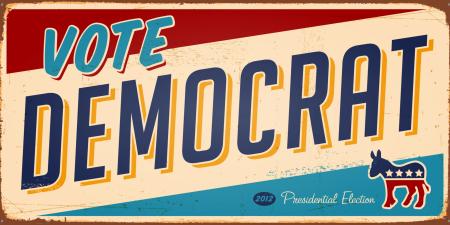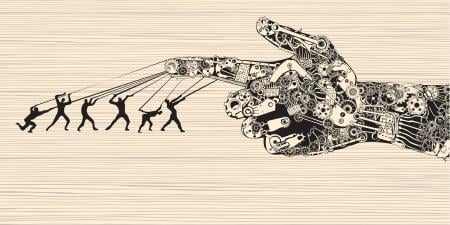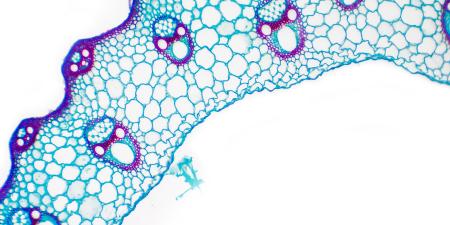It is a pleasure to introduce the experience of Korean doctors to the doctors and medical students of the United States. Although this article only skims the surface of the subject, its aim is to introduce the problems of the Korean medical system and the efforts made by the Korean doctors to fix them, hoping that this will help doctors worldwide to establish desirable medical systems and positive patient-doctor relationships.
Before beginning the discussion in full scale, it is necessary to explain the basic characteristics of the Korean medical system. The Korean medical system has a unique structure, and this uniqueness was at the root of the doctors' strike that broke out in the year 2000.
Distinct Characteristics of the Korean Medical System
The main characteristic of Korean medical system that sets it apart from others is that the delivery of medical services is in private hands while the government has complete control over the fees paid for medical services. It maintains this control by making it mandatory for all medical institutions and all citizens to be covered by the one and only government-run health insurance plan. Currently, 85 percent of sickbed capacity is possessed by the private sector, and most primary diagnosis medical institutions are also privately owned. The fundamental reason for the small percentage of public ownership of hospitals and other medical care delivery institutions is the fact that, following the Korean War, the establishment of a public health care system was considered less of a priority than other projects necessary to rebuild the war-torn country. Therefore, the establishment of the medical delivery system over the last few decades was almost entirely accomplished by private doctors. Even today, most medical schools and hospitals are independent, receiving no support from the government. The quality of medical service is quite high, and in several fields such as transplantation surgery, Korea is a world leader.
A second distinctive characteristic of the Korean medical system is the social insurance form of health care insurance introduced in 1977. This form of health care insurance started out as a benefit for government employees and corporation workers only. It became a form of social insurance in 1988 when it was extended to all citizens. Hence, in about 10 years, the goal expressed in the slogan, "Give all citizens the benefits of health insurance" was attained. The Korean health insurance system, however, turned out to have a fatal economic blind spot in its desire for "low premiums—low medical consultation fees—low pay." This is how it works. Citizens pay only 3 percent of their income for health insurance, but when they are ill, they must pay almost half of the total medical bill out of their own pockets. In order to make it possible for citizens to pay for medical services out-of-pocket, the government keeps the fees for medical services very low. In fact, according to one study, the fee paid for Korean medical service is, on average, less than 80 percent of the cost of the service. Isn't this surprising?
In such a situation, doctors and medical institutions were sure to go bankrupt. The medical institutions and the government needed an ingenious scheme. The scheme they came up with was an insurance coverage plan with certain exclusions (eg, expensive medications, high equipment use fees, cutting-edge medical technologies, plastic surgery etc. were not covered) and a scheme called the "pharmaceutical margin." Coverage exclusions need no further explanation, but the pharmaceutical margin does. The pharmaceutical margin refers to payments to physicians by pharmaceutical companies in return for prescribing and dispensing their drugs. These "unofficial" profits for physicians were possible because the activities of prescribing and dispensing drugs were not separated until 1999, and the government allowed the practice of unofficial or indirect profits by tacit consent.
There is a third distinctive characteristic of Korean medical services. As mentioned earlier, Korea has a history of having to build new systems out of chaos. Everything was in short supply following the Korean war, and naturally doctors were also scarce. Where doctors and hospitals did exist, people did not have enough money to pay for treatment. Under these circumstances, the group that often acted as primary-diagnosis doctors were pharmacists. Until recently, many Koreans chose to visit a nearby pharmacy and take the medication prescribed by the pharmacist. They visited medical institutions only to cure diseases that could not be cured by visiting the pharmacy. Within this tradition, doctors and pharmacists invaded each other's function. What is especially noteworthy is that, due to this historical background, there are many, many pharmacists in Korea. The current ratio of doctors to pharmacists is approximately 1.3 to 1, which is considerably different from the 3 to 1 ratio of doctors to pharmacists in the developed countries where the functions of diagnosis and prescribing are clearly divided from the function of dispensing.
In Korea, there is also an occupation called, "oriental medicine doctor." There are approximately 70,000 doctors, about 50,000 pharmacists, and about 12,000 oriental medicine doctors who graduate from university and obtain licenses after taking a national examination. The oriental medicine doctors enjoy a relatively high status because many citizens prefer "traditional medicine." Oriental medicine doctors use some modern medical knowledge, skills, and equipment under the name of "Western and Eastern medical collaboration." The fees paid for oriental medicine are estimated to be immense.
In the year 2000, most if not all Korean doctors undertook several large strikes. It started out when the government tried to enforce the separation of prescribing and dispensing (SPD). This is a system, like that in many developed countries, where doctors diagnose and issue prescriptions and patients go to the pharmacy to get the prescriptions filled. This seemingly logical system caused discord because it disrupted the prior system described above.
First of all, SPD meant that the doctors were no longer able to gain profit from the pharmaceutical margin because they were no longer allowed to dispense drugs. SPD also meant that the pharmacists who were accustomed to acting like "sub-doctors" must play the more limited role of pharmacist from then on. Before the separation of prescribing and dispensing (SPD) was enforced, doctors, pharmacists, and almost all citizens expressed disapproval of SPD. The pharmacists were concerned about the possibility of reduced profits due to the restriction of their role. The citizens feared the inconvenience and the increase of medical fees, since they would be going to 2 professionals instead of one.
The reasons for the doctors' opposition were more diverse. Of course, they were worried about their economic loss, but they also suspected that the habitual practice of diagnosis by pharmacists, though now illegal, would continue. Thirdly, they were concerned that the health insurance finance system, which was already in the red, would go completely bankrupt. And there was another grave matter. In the Korean medical culture, medication occupies a large part of treatment. Indeed, in traditional Korean medicine, treatment=medication. Hence doctors worried that if they were not the ones to give the medication directly to the patient, the effectiveness of treatment and the trust in doctors might decrease.
The government presented various detailed countermeasures to resolve the concerns of everyone involved—doctors, pharmacists, and citizens—but made several mistakes in the process. These were: (1) the government misjudged the effect of SPD on health insurance finance funds, and the funds decreased even further; (2) it criticised excessively the doctors' "indirect" income from the pharmaceutical companies which it had tacitly condoned until then; and (3) it lacked any long-term vision for the fundamental improvement of the so-called "3 cheap" system (ie, low premiums, low fees, low pay).
There had been dissatisfaction and distrust toward the government medical policy for various reasons over the prior 20 to 30 years, and the Korean doctors who were not organized had not been able to fight back. At the onset of the SPD enforcement, they expressed their pent-up dissatisfaction and anger. There were 2 basic reasons for their dissatisfaction: the economic disadvantages of SPD and their fear of what it would do to the nature of the medical profession as a whole.
Approximately 70,000 Korean doctors came together under the simple slogan of "medical reform." The Korean Medical Association (KMA), which had never played a central role amongst the doctors, started to lead the fight by forming a special organization. The November 1999 street demonstration of approximately 30,000 doctors was the first of several full-scale assemblies between 2000 to 2001. The ardor of the doctors, more than half of whom participated in these demonstrations, surprised the whole society, not to mention the government. At first, the demonstrators were mostly private practitioners, but, as time went by, even the medical school professors and residents started to participate.
In spite of attention aroused by the several demonstrations, the doctors finally resorted to striking. The first strike began with the closing of clinics for 3 days from April 3-5, 2000. In July 2000, all hospitals and clinics including the university hospitals closed for 1 week. During this period, all medical services with the exception of the emergency room (ER) and the intensive care unit (ICU) were discontinued, leading to great confusion. The participation of residents in the full-scale strike led to actual paralysis of the medical service system. During this process, quite a number of the medical leaders including the Korea Medical Association (KMA) president were arrested. The strike of Korean doctors continued on a sporadic basis through September 2000. In the end, the government yielded a fair amount in terms of policy.
The government, the doctors, and the pharmacists all suffered from the strikes. The government of President Kim Dae Jung suffered a series of reform failures and a decrease in number of supporters of the Kim administration. The doctors lost the trust of the citizens, which had not been that strong to begin with, and suffered economic loss. The pharmacists and pharmaceutical companies also revealed their weaknesses and suffered loss of image.
The strikes stopped in October 2000, but the conflict and opposition between the Korean doctors and government continues. The doctors are even more dissatisfied now because the government enforces more severe reductions in the fees that can be charged for medical services in order to make up for the financial loss in the health insurance system. Doctors are also reacting strongly against government policies that make it difficult for them to conduct "text–book–type" (standard) practices.
Now, 3 years after the SPD, the Korean medical field is still faced with the problems of the past. The "low premiums, low medical fee, low pay" system continues in an environment of distrust between doctors and citizens. The state of primary, secondary, and tertiary medical institution management is aggravated, and citizens complain that, although they pay more for health insurance, their benefits are not increasing. Doctors and many public health scholars hold the pessimistic view that Korean medicine will soon face system failure, and they agree that special measures must be taken to prevent this failure. They strongly disagree, however, on specific solutions. One side thinks that strengthening the government health insurance system can prevent economic harm to doctors and health risks to patients. The other side believes that the government should abolish the compulsory health insurance system and let the market take over providing insurance. It is yet unknown which way the Korean medical system will turn, but considering President Roh's political base, the former change is more likely. This means that the opposition between the doctors and the government will continue, at least for a while.
The events of the Korean medical field have been briefly illustrated. Although this process has been painful for the doctors, the government, and the citizens, it cannot be denied that gains have been made. Most importantly is that public opinion has formed about the seriousness of Korea's medical and health care problems. In the past, medical and health care problems have always been pushed aside as secondary to 2 main issues: economic development and democratization. Even though interest in public health problems has been rising due to the growth of the national income and the increase of the aging population, these kinds of issues have always been considered concerns of special groups only. Now, as a result of the events outlined above, people have come to realize that public health-related issues are complex and that the whole nation, all citizens, must come together to resolve them. This public realization is a step in the right direction toward solving the medical and health care system problems in Korea.
Secondly, the doctors' perspectives have changed. In the past, the doctors enjoyed a high socioeconomic position but did not act accordingly as professionals in society. Through their strike, the doctors recognized how important it is to gain a good reputation and the citizens' trust. They also discovered the importance of quality control and of raising the standard for ethical conduct of the profession as a whole. Finally, they recognized the importance of acquiring political influence.
Hence, Korean doctors are now thinking seriously about their new task. They are making an effort to break the stereotypical thinking of the citizens that "the doctors' benefit is the citizens' loss" and to persuade them instead that "the doctors' benefit can also be the citizens' benefit." They are trying to improve the image of doctors as "doctors for the citizens," "doctors working for citizens' health," and "the specialist group with a self-healing function."
These efforts have not paid off as of yet. Rather, the doctors of Korea seem to be in a state of despair. However, as the saying goes, "crisis is opportunity." The Korean medical field's defects and deception have peaked; the issues have been recognized as problems to be solved. From now on there must be cooperation on a plan for improvement, which is a positive prospective.
Isn't the precise diagnosis of a disease the most important step toward proceeding with the appropriate treatment? The Korean medical field now suffers a serious illness, but because the problems are known, we may hope to prescribe appropriately. We ask for the interest and encouragement of doctors worldwide for Korean doctors who underwent a lot of pain and are just beginning to face a new challenge.



